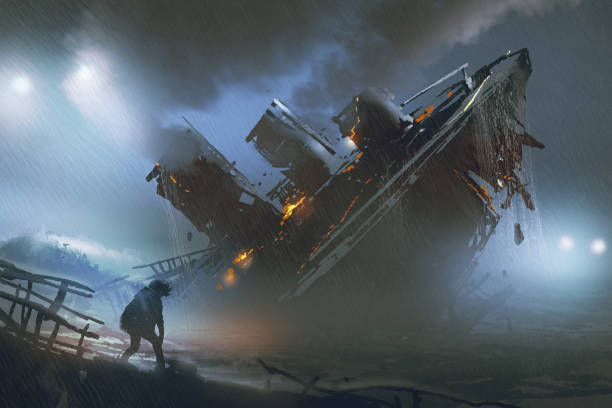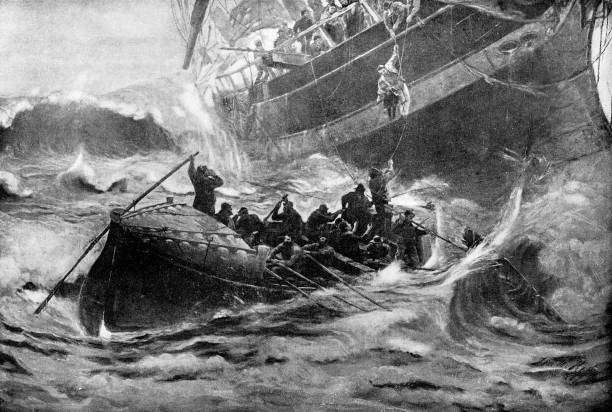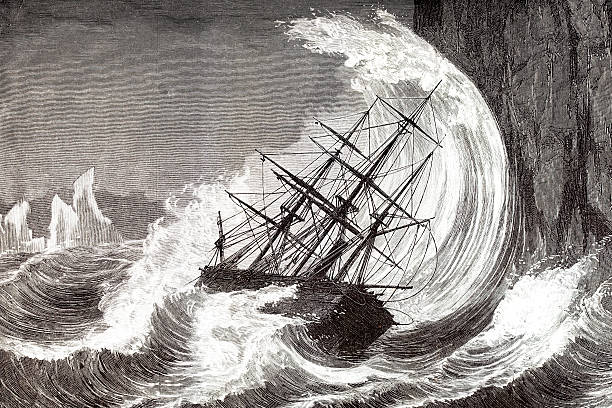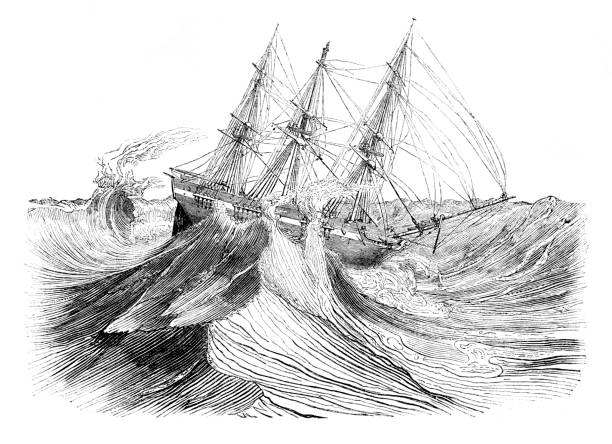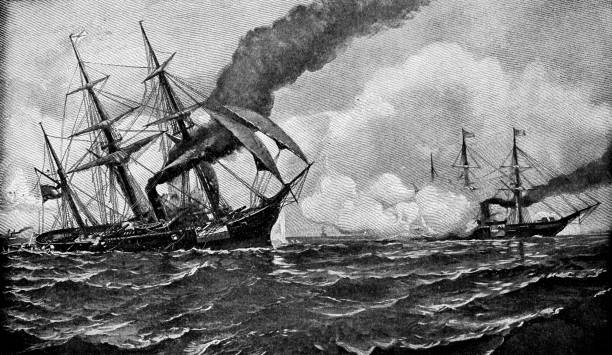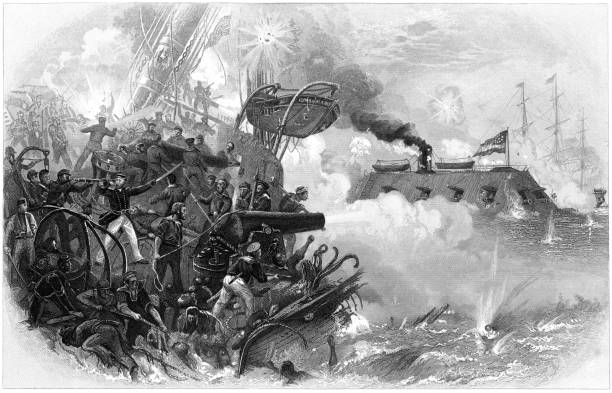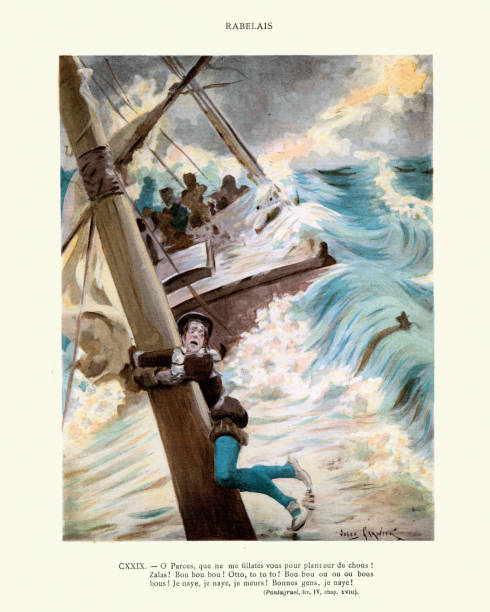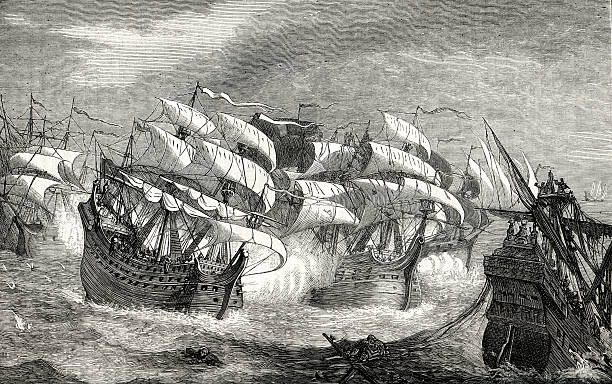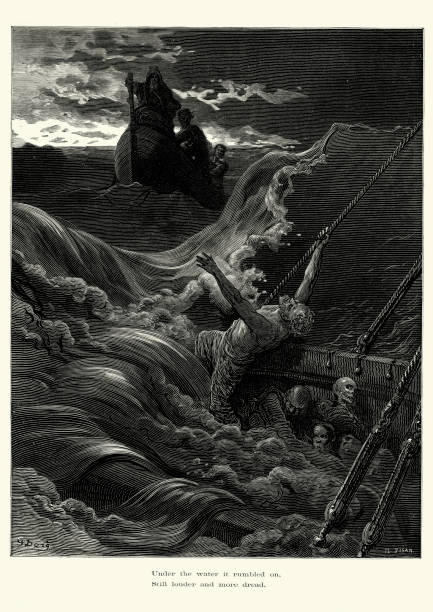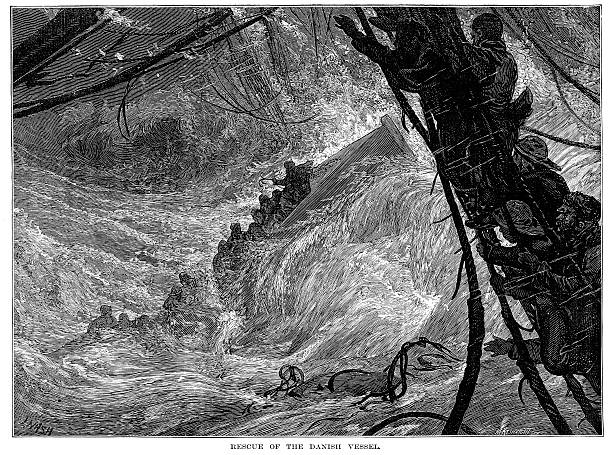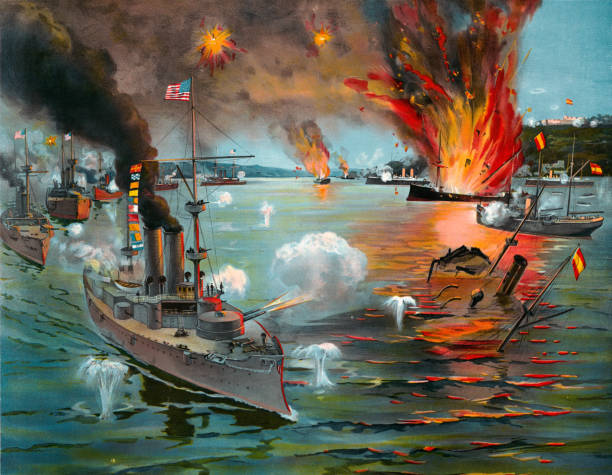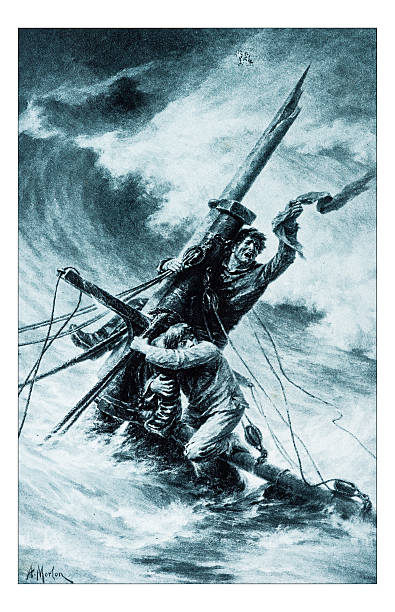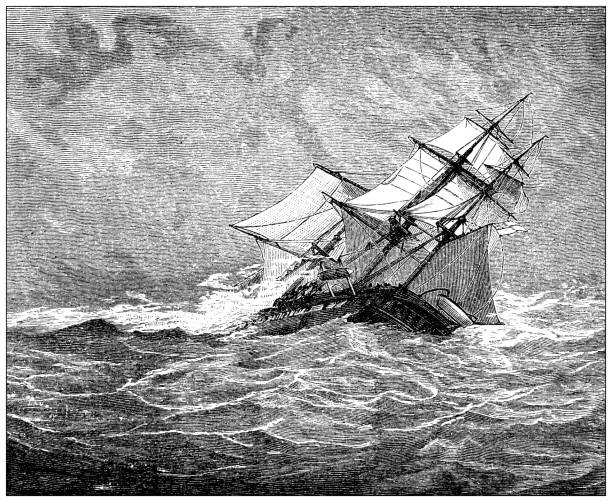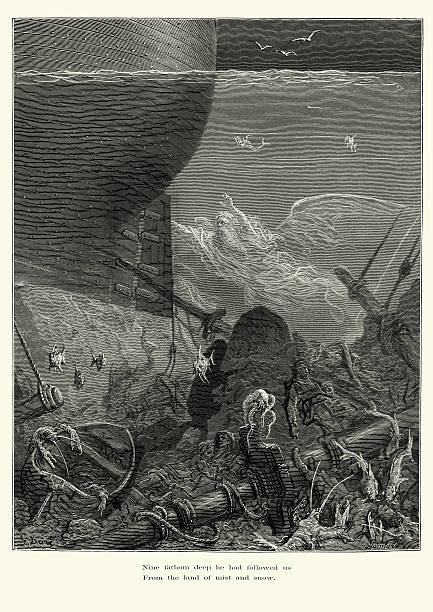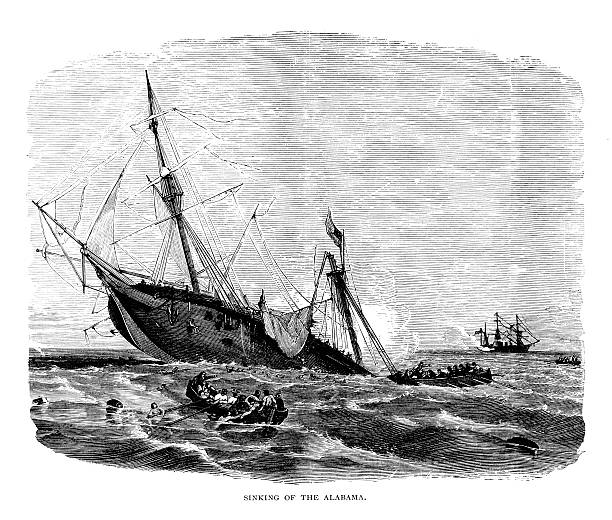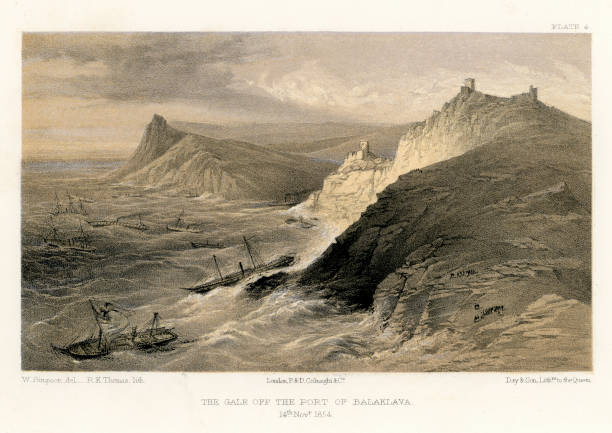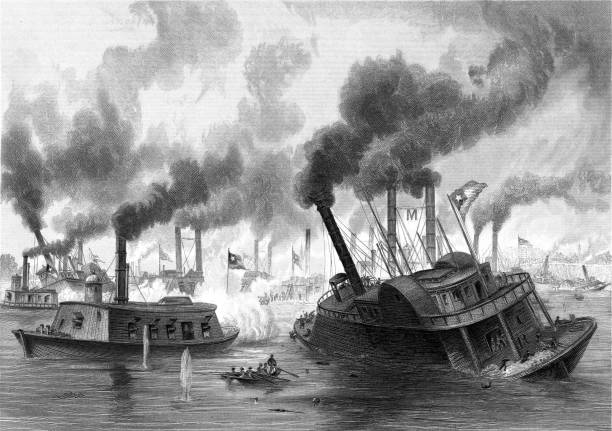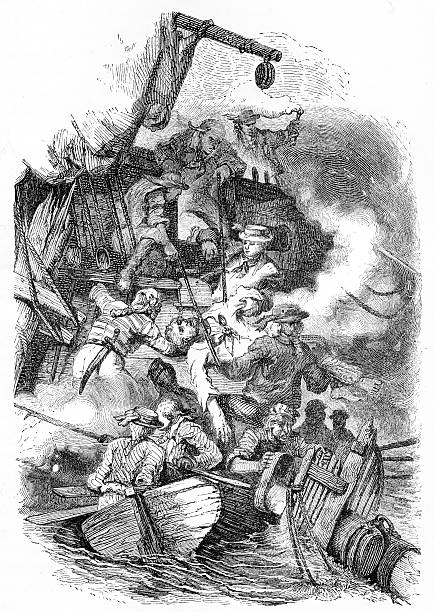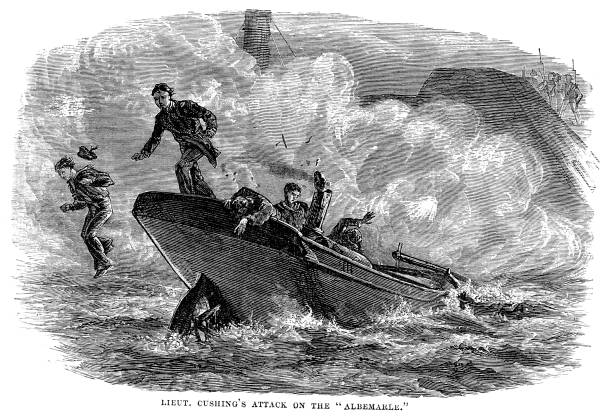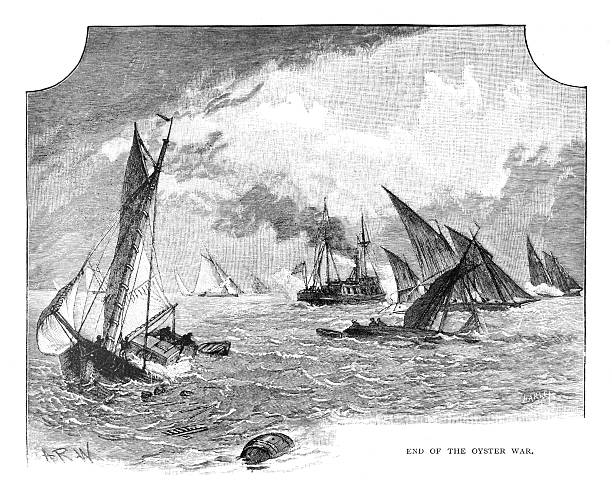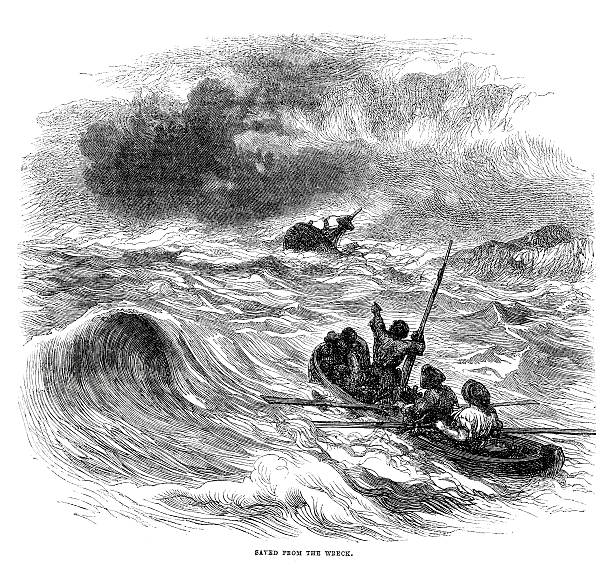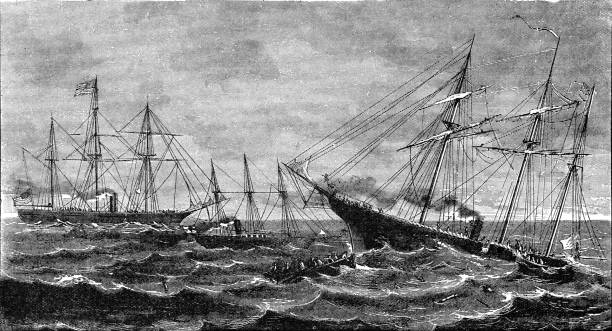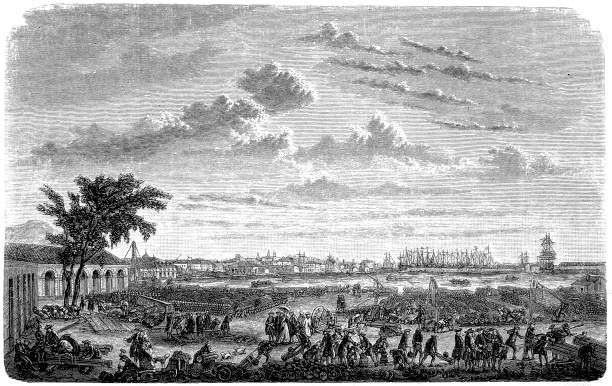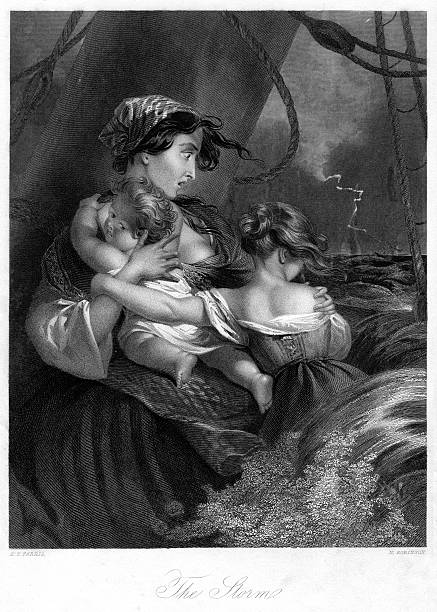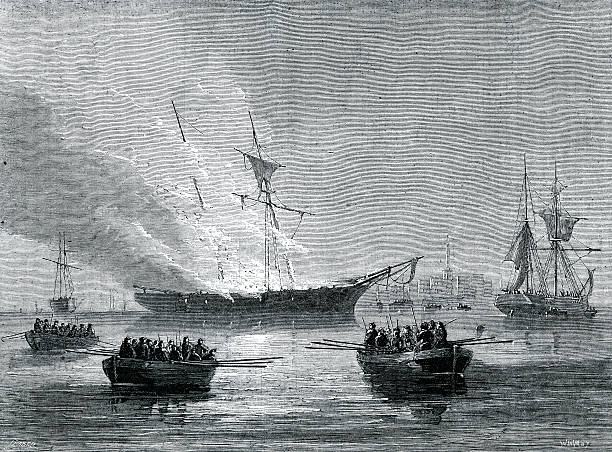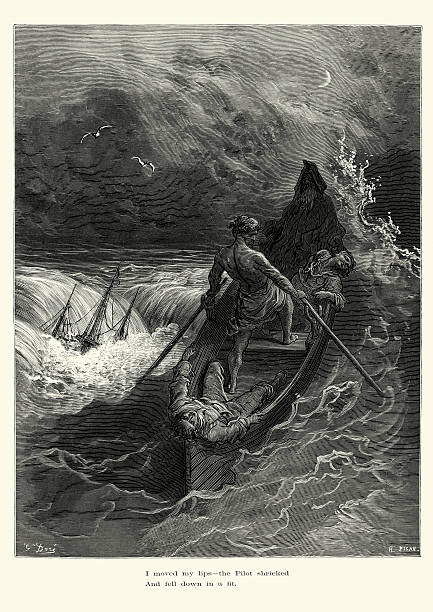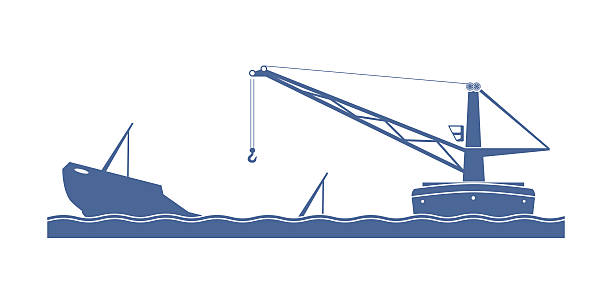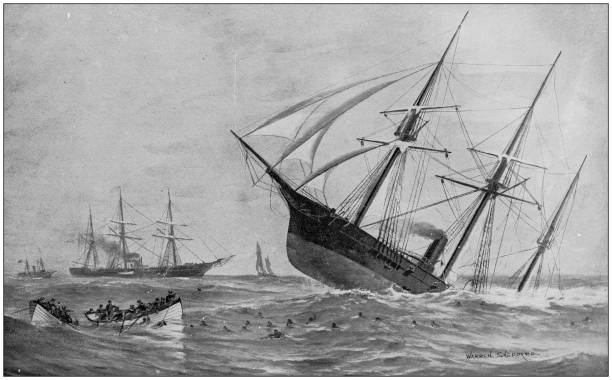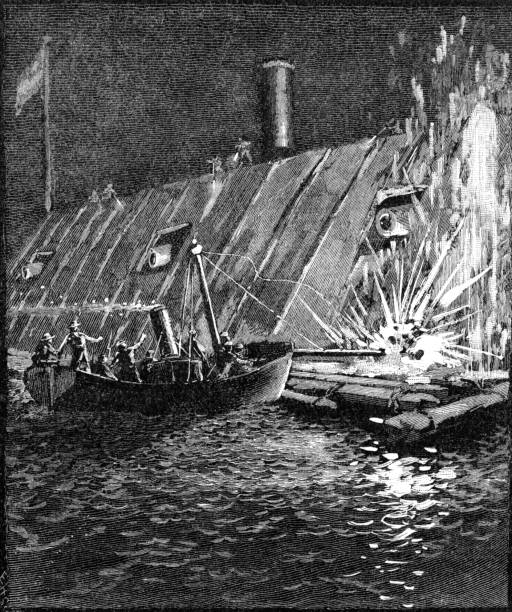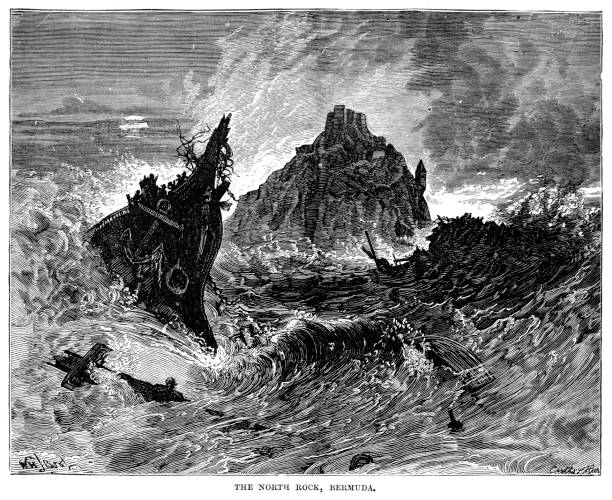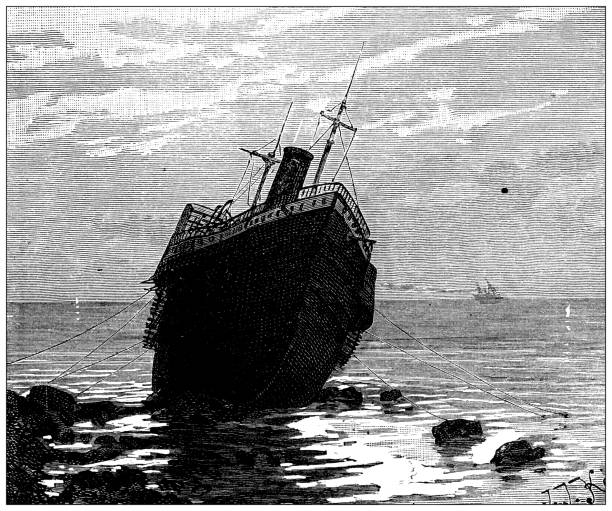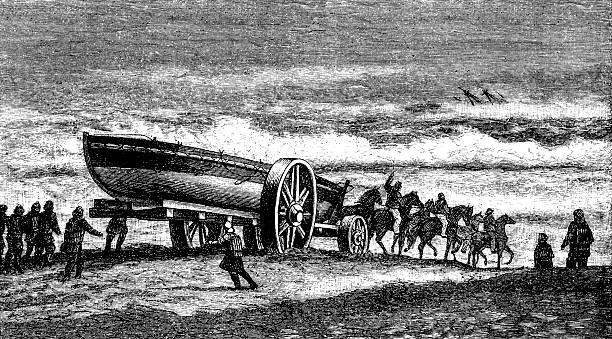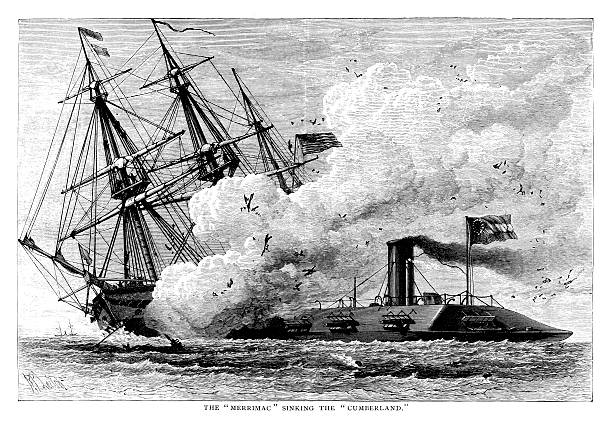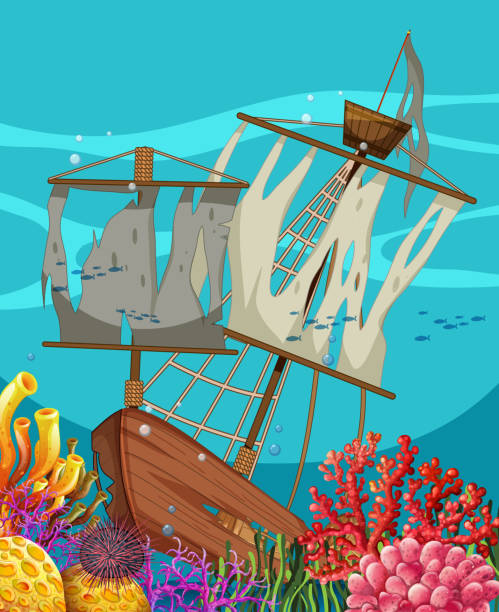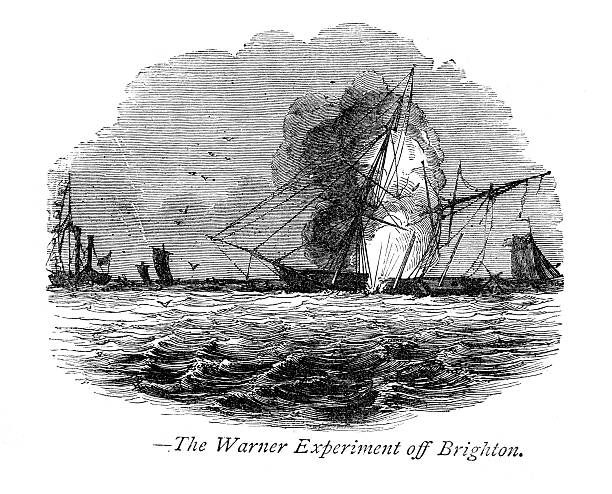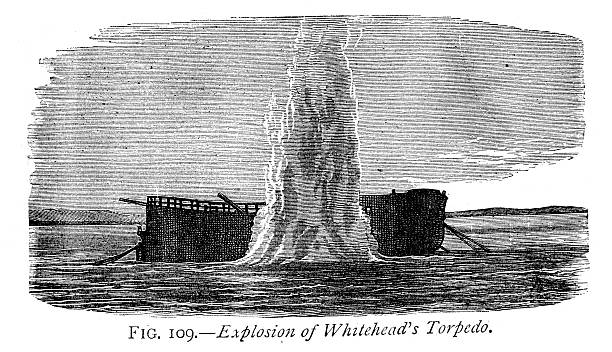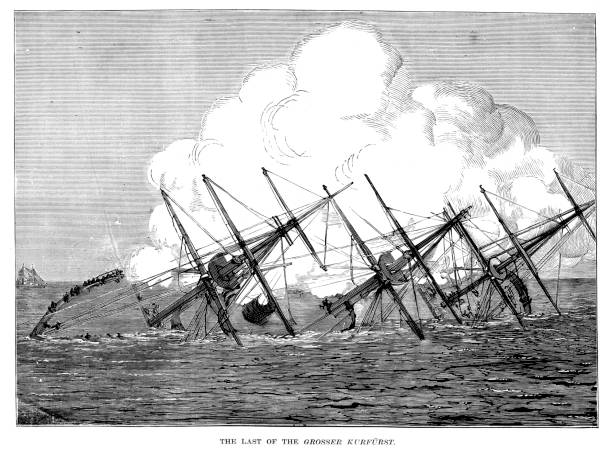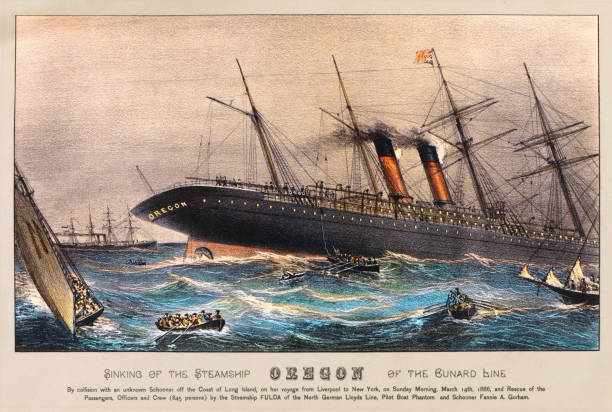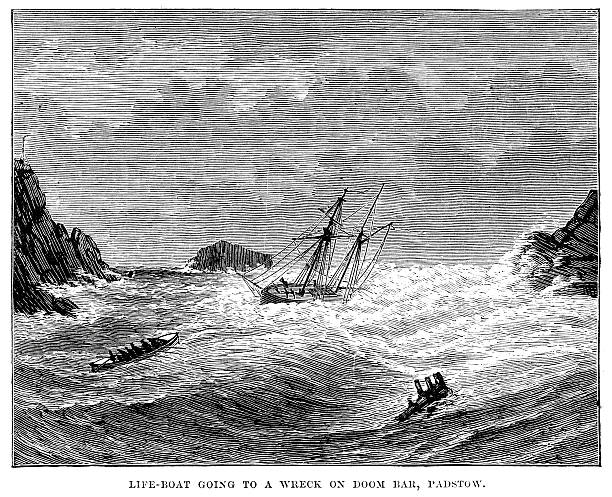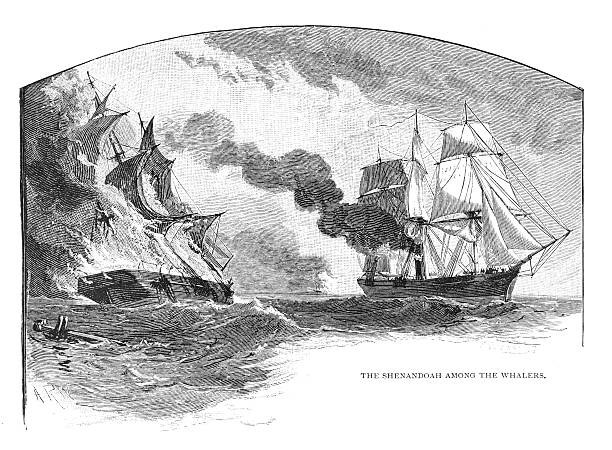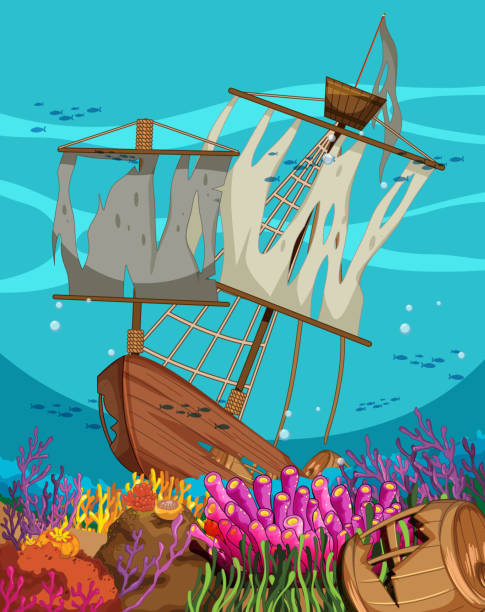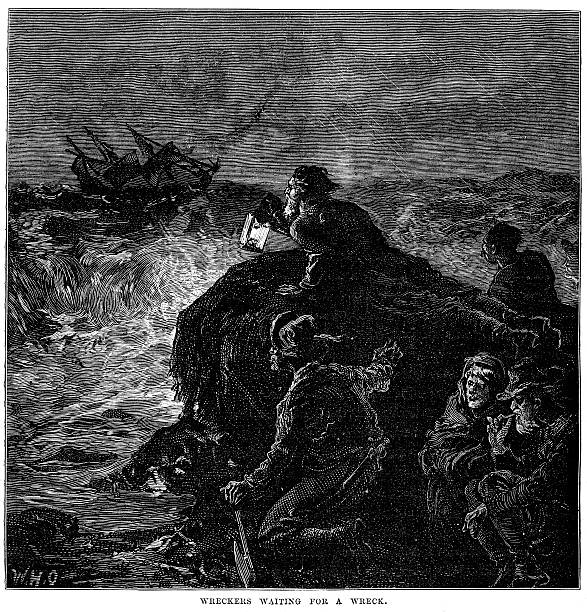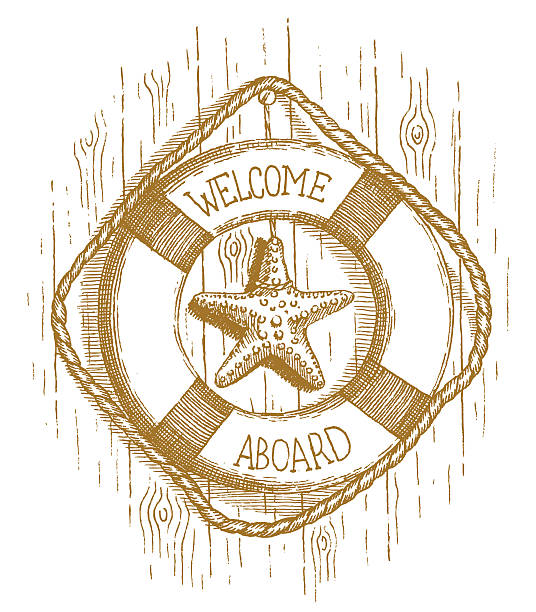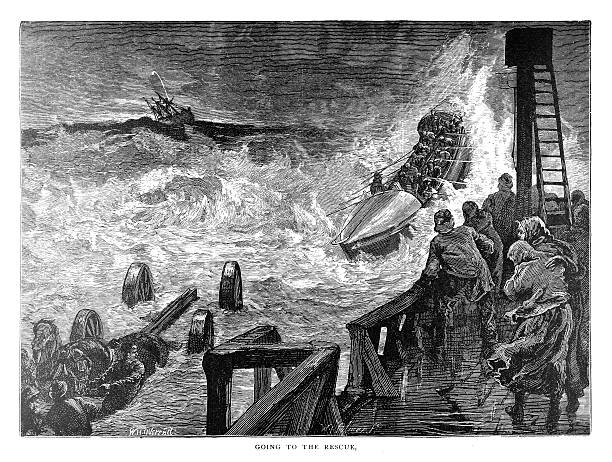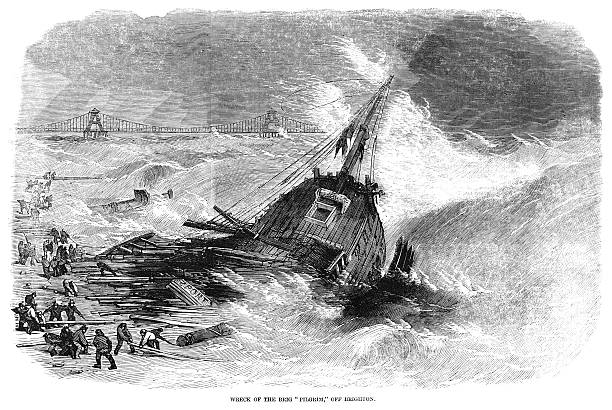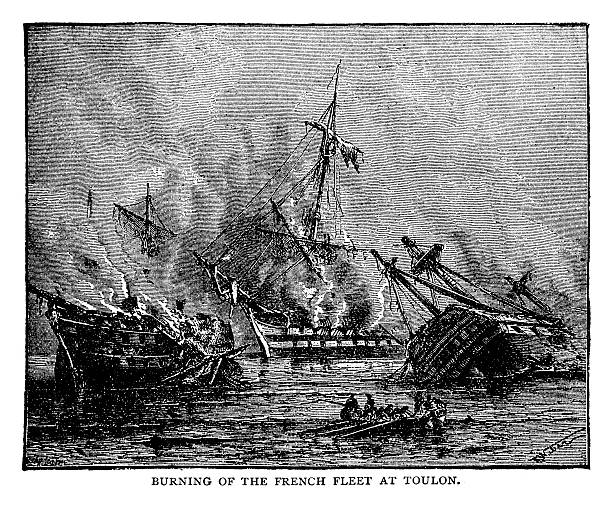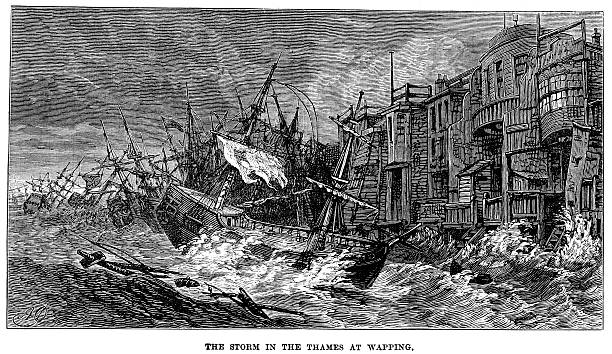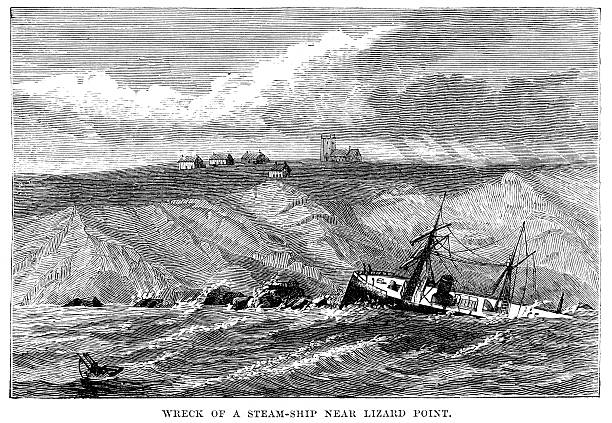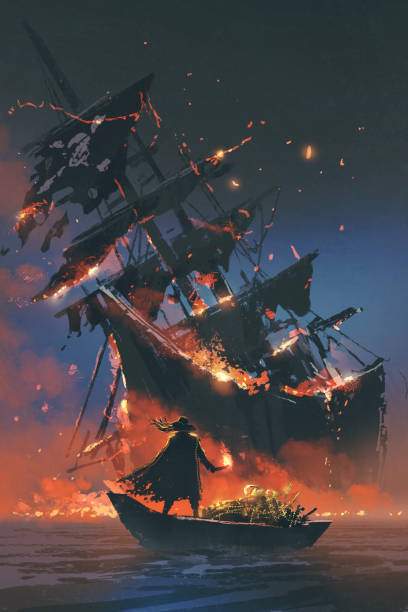
Sinking Ship Pictures Pictures stock illustrations
Browse 90+ sinking ship pictures pictures stock illustrations and vector graphics available royalty-free, or start a new search to explore more great stock images and vector art.

the pirate with burning torch standing on boat with treasure looking at sinking ship, digital art style, illustration painting
scene of man escape a sinking ship in rainy night, digital art style, illustration painting
Women and Children First by Thomas Marie Madawaska Hemy (circa 19th century). Vintage etching circa late 19th century.
Castaway people in boat with sinking sailing ship Original edition from my own archives Source : Zur guten Stunde 1893 Drawing : Hans Bohrdt
Engraving of sinking ship in a hurricane
Steel engraving of sinking three masted ship in a hurricane Original edition from my own archives Source : Tour du Monde 1840
Vintage image depicts a scene from the Battle of Manila Bay, also known as the Battle of Cavite. The battle took place in Manila Bay in the Philippines on May 1, 1898, and was the first major engagement of the Spanish–American War.
Sinking of the Alabama by Julian O. Davidson (circa 19th century). Vintage etching circa late 19th century.
On March 8, 1862, the CSS Virginia (ex-USS Merrimack) steamed out of the Elizabeth River and into the waters of Hampton Roads to attack the Federal fleet. The Virginia's first target was the USS Cumberland. The steam-powered, ironclad Virginia drove its 1,500 pound iron ram into the wooden side of the Cumberland, delivering a mortal blow. The Virginia's ram attack, combined with its deadly broadsides led to the deaths of 121 sailors out of 376 aboard the Cumberland. This painting by James Gurney shows the final moments of the Cumberland as it sinks into the waters of Hampton Roads. The Virginia, which had trouble dislodging itself from the crumpled side of the Cumberland, can be seen lurking just behind the stricken ship. To learn more about this battle, visit our Battle of Hampton Roads page.
Vintage illustration of a scene from Francois Rabelais's Gargantua and Pantagruel, by Jules Garnier. Book 4. Chap XVIII. How Pantagruel met with a great storm at sea.
Blurred underwater background with blue submarine silhouette and old sunken ship. Vector illustration EPS10. Mesh is used in background.
Vintage engraving from 1875 showing English ships under the command of Sir Francis Drake attacking Spanish treasure ship.
Vintage engraving by Gustave Dore of a scene from the Rime of the Ancient Mariner, Under the water it rumbled on, Still louder and more dread. The Rime of the Ancient Mariner is the longest major poem by the English poet Samuel Taylor Coleridge. It relates the experiences of a sailor who has returned from a long sea voyage. The mariner stops a man who is on the way to a wedding ceremony and begins to narrate a story. 1882
Vintage engraving showing the rescue of sailors from a sinking ship
Vintage image depicts a scene from the Battle of Manila Bay, also known as the Battle of Cavite. The battle took place in Manila Bay in the Philippines on May 1, 1898, and was the first major engagement of the Spanish–American War.
Vintage engraving by Gustave Dore of a scene from the Rime of the Ancient Mariner, Nine fathom deep he had followed us, From the land of mist and snow. The Rime of the Ancient Mariner is the longest major poem by the English poet Samuel Taylor Coleridge. It relates the experiences of a sailor who has returned from a long sea voyage. The mariner stops a man who is on the way to a wedding ceremony and begins to narrate a story. 1882
Vintage engraving showing a scene from the Crimean War 1853 to 1856, a conflict in which Russia lost to an alliance of France, Britain, the Ottoman Empire, and Sardinia. Gale off the Port of Balaklava, 14th November 1854
The battle started with an exchange of gunfire at long range, the federal gunboats setting up a line of battle across the river and firing their rear guns at the cottonclads coming up to meet them as they entered the battle stern first. Two of the four rams advanced beyond the line of the gunboats and rammed or otherwise disrupted the movements of their opponents; the other rams misinterpreted their orders and did not enter the battle at all. With the federal rams and gunboats not coordinating their movements and the Confederate vessels operating independently, the battle soon was reduced to a melee. It is agreed by all that the ram flagship, Queen of the West, initiated hostilities by slamming into CSS Colonel Lovell. She was then rammed in turn by one or more of the remaining cottonclads. Ellet was at this time wounded by a pistol shot in his knee, thereby becoming the only casualty on the Union side. (In the hospital, he contracted measles, the childhood disease that killed some 5,000 soldiers during the war. The combination of the disease and the debilitation caused by his wound was too great, and he died on June 21.) The remainder of the battle is obscured by more than the fog of war. Several eyewitness accounts are available; however, they are mutually contradictory to a greater degree than usual. All that is certain is that at the end of the battle, all but one of the cottonclads were either destroyed or captured, and one Yankee boat, Queen of the West, was disabled. The sole boat to escape, CSS General Earl Van Dorn, fled to the protection of the Yazoo River, just north of Vicksburg. Personnel losses among the Confederates cannot be estimated reliably.
Vintage engraving showing William B. Cushing's attack on the Confederate ironclad CSS Albemarle during a daring nighttime raid on 27 October 1864
Vintage engraving from 1862 showing people in a lifeboat as a ship sinks
Blurred underwater background with blue submarine silhouette and old sunken ship. Vector illustration EPS10.
"An engraving from the 'Illustrated Times' dated 1868 of the French frigate 'Junon' foundering in a cyclone in the Roads of Matre, near Malabar."
The Battle of Cherbourg, or sometimes the Battle off Cherbourg or the Sinking of CSS Alabama, was a single-ship action fought during the American Civil War between a United States Navy warship, the USS Kearsarge, and a Confederate States Navy warship, the CSS Alabama, on June 19, 1864, off Cherbourg, France.
Blurred underwater background with old ship and submarine silhouette. Mesh is used in background.
Illustration of a Military port of Toulon
Vintage engraving showing a Victorian mother and her children on a ship during a storm
"Vintage engraving from 1861 showing The Burning of the GaspAe. The GaspAe Affair was a significant event in the lead-up to the American Revolution. HMS GaspAe, a British revenue schooner that had been enforcing unpopular trade regulations, ran aground in shallow water on June 9, 1772, near what is now known as Gaspee Point in the city of Warwick, Rhode Island, while chasing the packet boat Hannah. In a notorious act of defiance, a group of men led by Abraham Whipple and John Brown attacked, boarded, looted, and torched the ship."
Vintage engraving by Gustave Dore of a scene from the Rime of the Ancient Mariner, I moved my lips the Pilot shrieked and fell down in a fit. The Rime of the Ancient Mariner is the longest major poem by the English poet Samuel Taylor Coleridge. It relates the experiences of a sailor who has returned from a long sea voyage. The mariner stops a man who is on the way to a wedding ceremony and begins to narrate a story. 1882
Salvaging a sunken ship. Crane on floating barge with remains of ship wreck. Vector illustration
William Barker Cushing was an officer in the United States Navy, best known for sinking the Confederate ironclad CSS Albemarle during a daring nighttime raid on October 27, 1864.
Vintage engraving from 1871 showing a Shipwreck at the North Rock Bermuda.
Legal and business cartoon showing the captain of Titanic and lawyer saying to him, "I'm here to provide you a legal lifeboat."
Antique illustration of a Lifeboat going toward shipwreck
Sinking ship under the ocean illustration
SOS sign on the beach illustration
Vintage engraving of The Warner experiment off Brighton. Testing Naval Weapons. 1884
Vintage engraving of a torpedo exploding a ship. 1884
Vintage engraving showing sinking of the SMS Grosser Kurfurst , 1878. An ironclad turret ship of the German Kaiserliche Marine. The Grosser Kurfürst was sunk on her maiden voyage in an accidental collision with the ironclad SMS König Wilhelm.
Vintage image depicts the SS Oregon, a British passenger steamship of the Cunard Line, sinking near Long Island, New York, in March 1886 after colliding with the schooner Charles R. Morse. The collision caused the Oregon to flood rapidly, resulting in the loss of around 198 lives. This incident emphasized the necessity for enhanced safety regulations and navigation practices, leading to heightened scrutiny of the Cunard Line.
Vintage engraving showing a lifeboat going to a wreak on Doom Bar, Padstow, Cronwall, England. 1878
Sinking ship under the ocean illustration
Vintage engraving showing Wreckers waiting for a wreck. Wrecking is the practice of taking valuables from a shipwreck which has foundered near or close to shore.
Lifebuoy drawn by hand eps 8
"The coal-brig 'Pilgrim', out of Middlesbrough and weighing 160 tons, wrecked on the beach at Brighton, Sussex. Locals are eagerly salvaging what they can. Engraving from 'Illustrated London news', 1857."
Captaing saving wpounded sailors on sinking warship - Scanned 1886 Engraving
Vintage engraving showing ships being destroyed at anchor during a Storm on the Thames, Wapping, London, England
Vintage engraving showing the Wreak of a Steamship near Lizard Point, Cronwall, England 1878
